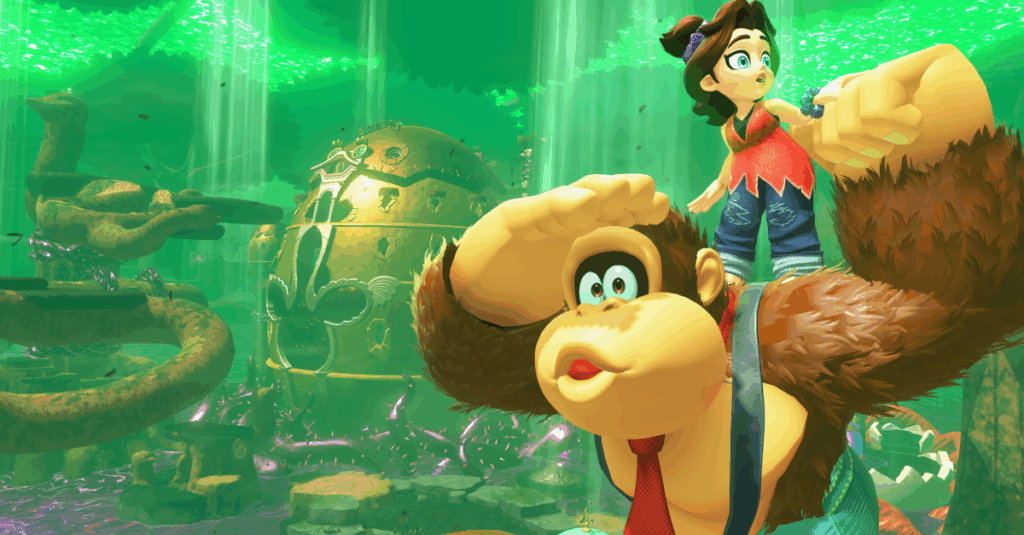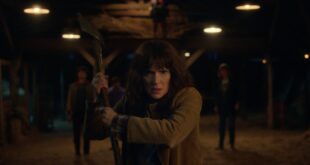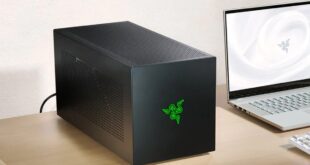
My first thought upon starting up Donkey Kong Bananza was, “Why yes, I actually would like to go ape shit.” The game starts by having Donkey Kong smash through a wall to reveal a glittering gem waiting to be liberated from the rock. But instead of punching the bright yellow gem into bite-size pieces, I kept punching through the walls and floors, digging tunnels into the landscape.
With the Nintendo Switch 2 finally out in consumers’ hands for more than a month now and the luster of the console’s newness fading, we’re left asking, “What’s this thing actually capable of?” The first big exclusive, Mario Kart World, was a nice aperitif, giving players a bit of the new — processing power and graphics — firmly enmeshed in the old familiarity of Mario Kart. Donkey Kong Bananza, now the console’s second major exclusive, represents the Switch 2’s first real course, and it’s a fantastic feast.

Image: Nintendo
In Bananza, Donkey Kong has given up the lush comfort of his island to become a working monkey (or ape, as it were). He’s added a pair of overalls and a hard hat to his look and has ventured to Ingot Isle to dig up banadium gems — precious stones in the shape of banana bunches — with religious zeal. However, a gang of ruthless capitalists comes along and steals all the banana gems, forcing DK and his new friend Pauline to venture to the planet’s core to stop them.
There’s one rule to keep in mind playing Bananza: ABP. Always Be Punching. There’s an enemy ahead? Punch it. An obstacle? Punch through it. A friendly rock offering you some health-restoring apple juice? Ah, what the hell, punch him too. The punch action is extremely satisfying, enhanced by all the sounds of the different materials. Sand has a powdery quality to its sound as it crunches under DK’s feet. So does gravel, but the sound it makes is perceptibly different in the same way real sand is different from real gravel.
The variety of punchable materials definitely makes the case for Bananza being a Switch 2 game. Bananza’s developers told me that this was originally meant to be an original Switch title before the prospect of the Switch 2’s enhanced graphical and processing power changed the calculus of development. I can see what all that extra power was for when I spot detail in the environment at a distance. When DK punches through snow, snowflakes sprinkle around. Speaking of sprinkles, I love that the frozen layer is actually a huge dessert factory and that what I thought was mud was actually textured chocolate sprinkles. I hate that DK can eat apples for health but not the chocolate dirt.

It’s not perfect. There are rare moments when there’s a lot of graphical noise that the game chugs a bit. Nintendo says it is aware of the issue, though I only encountered slowdown once and during the exceedingly badass end boss fight.
With Bananza, I could tell that the Breath of the Wild duology still has a chokehold over Nintendo’s designers. Not only does Bananza present BOTW-style openness emphasizing exploration, but every level starts with a slow, cinematic reveal as DK free-falls from the sky. Despite the fact that there are 17 distinct levels, dropping in from the air BOTW-style never got old. Each level was crafted with a creativity that was fun to peel apart — in some cases literally.
One of the later levels, deep within the mantle, was a beach resort strewn with colossal fruits that were fun to tunnel through. The fleshy fruits weren’t exactly rendered true to life, but I still had a moment of discomfort imagining DK and Pauline getting all sticky tunneling through a giant strawberry. I could also see the DNA of Super Mario Odyssey in the general cadence of gameplay. There are bananas (like moons) to uncover either in the world itself or contained within special challenges.
The damage DK does to the environment persists, permanently altering the landscape, and I can see those changes reflected in the game’s map for all time. (Unless I want to revert everything back to the way it was, which is a menu option.) There’s also a vastness that’s made approachable by exploration. More often than not, if I see a distant area on the map or from a high-up vantage point, I can go there, and, even better, there’s probably something hidden for me to find. The prospect of discovery through destruction, more than finishing the story, was what propelled me forward.
Not that the story itself isn’t fun. Nintendo has inadvertently made a game for the current political moment. A gross and scrungly (my words) president (game’s words) who has more bananas than he could ever need has decided to steal even more while destroying the world with the byproducts of his manufacturing company. He can do almost nothing by himself, relying on the intelligence of a pretty but evil woman and the enforcement of a big, mean muscle dude. Coincidence? Definitely. But it’s still fun to punch them and imagine you’re working out your feelings.

Then there’s DK himself: a big, simple guy who has decided to use his massive power to stop the bad guys while helping a cute little girl find her confidence. I love Pauline as a sidekick, and I typically hate mouthy audience surrogates. Pauline hangs off DK’s back but rarely chirps about where to go next. In fact, she’s quiet for most of the game, only talking at length whenever the pair checks into a hideaway for a rest. Then, as you drift off to health-restoring sleep, she’ll remark on your adventures or share her own thoughts. It’s a cute, natural way to see her character develop while not being an intrusive Navi type.
I tried Bananza’s co-op with my husband on his original Switch. It was a breeze to start, but just make sure your OG Switch has been updated for the GameShare function. Player 2 controls Pauline and is able to use her voice to blast objects and enemies. That’s it. It’s in fact so simple that my player 2 quit after five minutes because he saw essentially all the multiplayer had to offer. However, you can see the performance issues the original Switch would have had with this game, as there were lots of pop-in and frame rate issues. Also, unless you’re an artist or really nostalgic for squishing Mario’s face on the Super Mario 64 title screen, you’re not gonna get much out of Bananza’s rock sculpting mode.
Bananza also does a thing I love where its narrative is reinforced in the game’s mechanics. Pauline is a girl who loves to sing but is afraid of performing in front of big crowds. She works that out over the course of the game because it’s her voice that powers up DK’s transformations, known as Bananzas. There’s a zebra form that lets him run fast over disintegrating blocks, an ostrich that lets him fly, and more. (The game very cleverly shuts down the “but ostriches can’t fly” pedants by essentially saying, “Yes, we know. It’s a video game, don’t think too hard.”) With every new Bananza performance, DK gets more powerful and Pauline gets more confident.
Bananza is a dad game the same way The Last of Us is a dad game. Same world-trekking adventure with a big strong dude protecting a powerful little girl. But where TLOU makes you have big sad feelings about all the people the game forces you to kill, Bananza presents you with a slight alternative — what if you could use your powers to fuck shit up and not be a dick about it? DK smiles often. People are happy to see him. That friendly rock I mentioned earlier? When you punch him or any NPC, it turns into a high five. All that destruction is welcome because it’s helping restore the world.
Donkey Kong Bananza launches on July 17th on the Nintendo Switch 2.
 Latest World Breaking News Online News Portal
Latest World Breaking News Online News Portal





